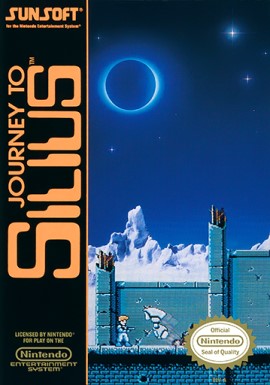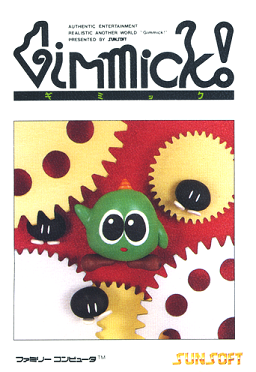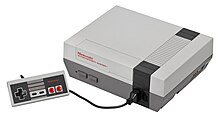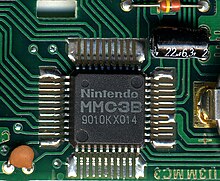
The Super Nintendo Entertainment System, commonly shortened to Super Nintendo, Super NES or SNES, is a 16-bit home video game console developed by Nintendo that was released in 1990 in Japan and South Korea, 1991 in North America, 1992 in Europe and Oceania and 1993 in South America. In Japan, it is called the Super Famicom (SFC). In South Korea, it is called the Super Comboy and was distributed by Hyundai Electronics. The system was released in Brazil on August 30, 1993, by Playtronic. Although each version is essentially the same, several forms of regional lockout prevent cartridges for one version from being used in other versions.

A video game console is an electronic device that outputs a video signal or image to display a video game that can be played with a game controller. These may be home consoles, which are generally placed in a permanent location connected to a television or other display devices and controlled with a separate game controller, or handheld consoles, which include their own display unit and controller functions built into the unit and which can be played anywhere. Hybrid consoles combine elements of both home and handheld consoles.

The Family Computer Disk System, commonly shortened to the Famicom Disk System, or just Disk System, is a peripheral for Nintendo's Family Computer home video game console, released only in Japan on February 21, 1986. It uses proprietary floppy disks called "Disk Cards" for cheaper data storage and it adds a new high-fidelity sound channel for supporting Disk System games.

Castlevania II: Simon's Quest is a 1987 action role-playing game developed and published by Konami. It was originally released in Japan in 1987 for the Famicom Disk System, and in North America in 1988 for the Nintendo Entertainment System. It is the second Castlevania game released for the NES, following the original Castlevania (1986). Set seven years after the events of the first installment, the player once again assumes the role of vampire hunter Simon Belmont, who is on a journey to undo a curse placed on him by Dracula at the end of their previous encounter. Dracula's body was split into five parts, which Simon must find and bring to the ruins of Castle Dracula in order to defeat him. The game deviates from the traditional platforming of its predecessor, incorporating role-playing and open world elements.
Tengen Inc. was an American video game publisher and developer that was created by the arcade game manufacturer Atari Games for publishing computer and console games. It had a Japanese subsidiary named Tengen Ltd..

Castlevania III: Dracula's Curse is a 1989 platform game developed and published by Konami for the Nintendo Entertainment System. It was released in Japan in 1989, and in North America in 1990, and in Europe by Palcom in 1992. It was later released on the Virtual Console for the Wii, Nintendo 3DS, and Wii U.

Journey to Silius, known in Japan as Rough World, is a side-scrolling run and gun video game developed and published by Sunsoft for the Nintendo Entertainment System in 1990.
A raster interrupt is an interrupt signal in a legacy computer system which is used for display timing. It is usually, though not always, generated by a system's graphics chip as the scan lines of a frame are being readied to send to the monitor for display. The most basic implementation of a raster interrupt is the vertical blank interrupt.

Gimmick!, released in Scandinavia as Mr. Gimmick, is a platform video game developed and published by Sunsoft, and originally released in Japan for the Family Computer in 1992. The story follows a small green yōkai named Yumetaro who was mistakenly gifted as a toy to a young girl. After the girl's toys come to life and whisk the girl away to another dimension, Yumetaro gives chase to save her. Playing as Yumetaro, the player must maneuver through a variety of levels, using the protagonist's star-shooting power to defeat enemies and progress through the game.

Micro Genius is a brand name used for Famicom clone consoles marketed in several countries around the world, particularly in areas where Nintendo consoles were not readily available, including the Middle East, Southeast Asia, South America, Eastern Europe, South Africa and East Asian countries excluding Japan and South Korea. The name was initially and most famously used by TXC Corporation for its range of Taiwanese-made Famicom clones, software and accessories, but later passed to other companies and remains in use today on rebranded Chinese Famicom clones and LCD games.

A ROM cartridge, usually referred to in context simply as a cartridge, cart, or card, is a replaceable part designed to be connected to a consumer electronics device such as a home computer, video game console or, to a lesser extent, electronic musical instruments.

Final Fantasy VII is an unlicensed "Shanzhai" demake of SquareSoft's role-playing video game Final Fantasy VII, originally released for PlayStation in 1997. The two-dimensional "port" was developed and published by Chinese company Shenzhen Nanjing Technology for Subor, a Famiclone. The cartridge itself is unique, as it is structurally different from licensed Famicom cartridges in terms of hardware and programming.

The Nintendo Entertainment System (NES) is an 8-bit third-generation home video game console produced by Nintendo. It was first released in Japan in 1983 as the Family Computer (FC), commonly referred to as Famicom. It was redesigned to become the NES, which was released in American test markets on October 18, 1985, and was soon fully launched in North America and other regions.

Castlevania, known in Japan as Akumajō Dracula, is a 1986 platform game developed and published by Konami for the Family Computer Disk System. It was originally released in Japan in September 1986, before being ported to cartridge format and released in North America for the Nintendo Entertainment System (NES) in May 1987 and in Europe in 1988. It was also re-issued for the Family Computer in cartridge format in 1993. It is the first game in Konami's Castlevania video game series.

The Nintendo Entertainment System Game Pak is the software storage medium for the Nintendo Entertainment System.


















